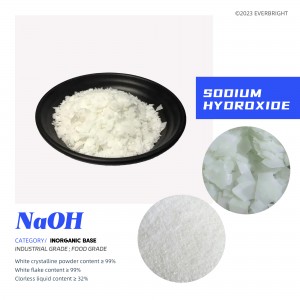-

Sodium Bisulfate
Sodium bisulphate, also known as sodium acid sulfate, is sodium chloride (salt) and sulfuric acid can react at high temperatures to produce a substance, anhydrous substance has hygroscopic, aqueous solution is acidic. It is a strong electrolyte, completely ionized in the molten state, ionized into sodium ions and bisulfate. Hydrogen sulfate can only self-ionization, ionization equilibrium constant is very small, can not be completely ionized.
-

Calcium Hydroxide
Hydrated lime or hydrated lime It is a white hexagonal powder crystal. At 580℃, the water loss becomes CaO. When calcium hydroxide is added to water, it is divided into two layers, the upper solution is called clarified lime water, and the lower suspension is called lime milk or lime slurry. The upper layer of clear lime water can test carbon dioxide, and the lower layer of cloudy liquid lime milk is a building material. Calcium hydroxide is a strong alkali, has bactericidal and anti-corrosion ability, has a corrosive effect on skin and fabric.
-

Sodium Silicate
Sodium silicate is a kind of inorganic silicate, commonly known as pyrophorine. Na2O·nSiO2 formed by dry casting is massive and transparent, while Na2O·nSiO2 formed by wet water quenching is granular, which can be used only when converted into liquid Na2O·nSiO2. Common Na2O·nSiO2 solid products are: ① bulk solid, ② powdered solid, ③ instant sodium silicate, ④ zero water sodium metasilicate, ⑤ sodium pentahydrate metasilicate, ⑥ sodium orthosilicate.
-

Ferrous Sulfate
Ferrous sulfate is an inorganic substance, the crystalline hydrate is heptahydrate at normal temperature, commonly known as “green alum”, light green crystal, weathered in dry air, the surface oxidation of brown basic iron sulfate in humid air, at 56.6℃ to become tetrahydrate, at 65℃ to become monohydrate. Ferrous sulfate is soluble in water and almost insoluble in ethanol. Its aqueous solution oxidizes slowly in air when it is cold, and oxidizes faster when it is hot. Adding alkali or exposure to light can accelerate its oxidation. The relative density (d15) is 1.897.
-

Sodium Hydroxide
It is a kind of inorganic compound, also known as caustic soda, caustic soda, caustic soda, sodium hydroxide has strong alkaline, extremely corrosive, can be used as acid neutralizer, with masking agent, precipitating agent, precipitation masking agent, color agent, saponification agent, peeling agent, detergent, etc., the use is very wide.
-

Sodium Tripolyphosphate(STPP)
Sodium tripolyphosphate is an inorganic compound containing three phosphate hydroxyl groups (PO3H) and two phosphate hydroxyl groups (PO4). It is white or yellowish, bitter, soluble in water, alkaline in aqueous solution, and releases a lot of heat when dissolved in acid and ammonium sulfate. At high temperatures, it breaks down into products such as sodium hypophosphite (Na2HPO4) and sodium phosphite (NaPO3).
-

Oxalic Acid
Is a kind of organic acid, is a metabolic product of organisms, binary acid, widely distributed in plants, animals and fungi, and in different living organisms play different functions. It has been found that oxalic acid is rich in more than 100 kinds of plants, especially spinach, amaranth, beet, purslane, taro, sweet potato and rhubarb. Because oxalic acid can reduce the bioavailability of mineral elements, it is considered as an antagonist for the absorption and utilization of mineral elements. Its anhydride is carbon sesquioxide.







